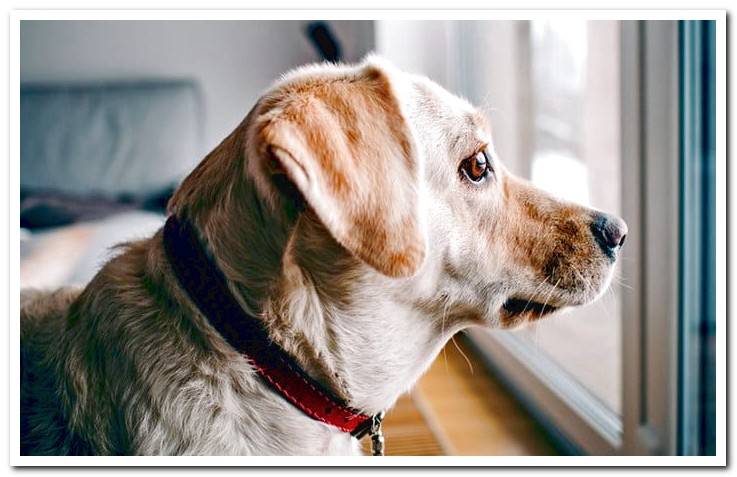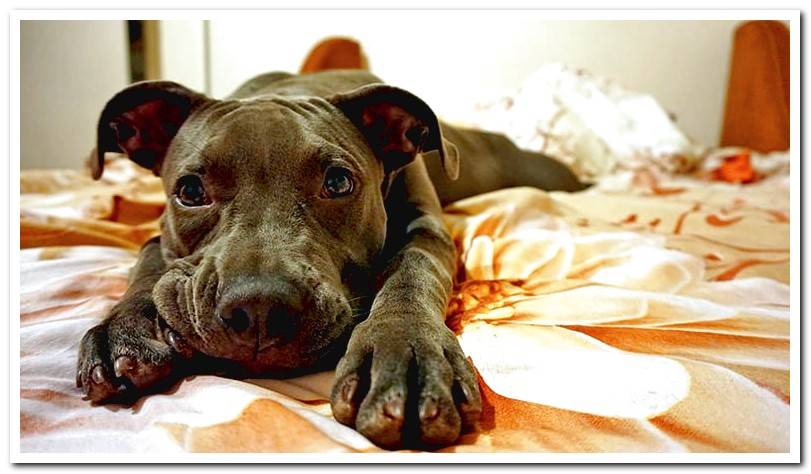
It is evident that the confinement at home by COVID-19 is affecting each of us to a greater or lesser extent, but we must also analyze whether this situation may be influencing our dogs and whether we can take any measures so that its impact on our pets are as few as possible.
In the last weeks, Expert veterinaryns have analyzed the changes that have occurred in the environment of pets as a consequence of confinement and if this situation is causing changes in the behavior of dogs or behavior problems.
Next, we will explain the conclusions that the experts have reached and what general measures they recommend to avoid the appearance of behavioral problems during confinement or after returning to normality.
Index of contents
- 1 What changes has confinement brought about in the dogs’ environment?
- 2 How do these changes affect the behavior of dogs?
- 3 What general recommendations are recommended to take during this confinement?
- 4 What specific measures can we take to avoid separation anxiety problems?
What changes has confinement brought about in the dogs’ environment?
In recent weeks, behavioral veterinaryns have conducted a study through surveys of dog owners in Spain, analyzing the changes that may have occurred in the environment of dogs as a result of home confinement by COVID-19 .
Mainly two aspects have changed in the environment of our dogs:
- Interaction with the owner: We owners are spending more time at home during confinement, so the level of interaction with our dog is inevitably higher these days. Owners say they are playing more with their pets, hugging and petting them more, and the number of treats dogs receive these weeks is higher.
- Ride time: Although the number of walks is maintained with an average of three walks per day, contrary to what we might think, the length of walks during confinement has been reduced. Dogs are taking the same number of walks as before confinement, but these are shorter.
How do these changes affect the behavior of dogs?
Due to the confinement the time that the dogs spend with the owner or with the family is higher than the one they used to spend. In a normal week the dogs spent 5.4 hours alone on average per day. These days, dogs are spending many more hours accompanied and this can give rise to two negative situations:
- Appearance or worsening of problems to be alone: When we return to our daily routine and the dogs have to be left alone again for longer, there may be separation anxiety Or, in dogs that have already overcome their problem, this pattern of behavior reappears, because with confinement, their routine of being alone, to which they have become accustomed, has been broken.
- Aggression towards the family: If during these days we do not respect our dog’s rest times, we can create negative reactions towards our interaction. This situation can occur especially when dogs have to live with young children throughout the day without being able to have quiet spaces where they can get away from this interaction when they need it.
The decreed state of alarm has modified the characteristics of the walks of our dogs. They have been reduced in duration, so dogs have seen their activity level decrease in recent weeks.
In addition, during walks they can no longer interact with other dogs or people, so this situation is generating frustration in our dogs and can lead to the appearance of behavioral problems:
- Aggression towards other dogs during walks triggered by frustration at not being able to interact with each other.
- Shredding of things, urination or defecation at home.
- Vocalizations.

What general recommendations are recommended to take during this confinement?
To prevent confinement from having a negative effect on our pet, veterinary experts have made a number of recommendations General that all dog owners can follow during these days.
- Game and exploration: To compensate for the reduction in the time of your walks, we can encourage exploratory behavior at home by hiding prizes in different corners, starting with uncomplicated areas and increasing the difficulty. We must accompany the dog in its search and point out where it should sniff saying the word “search”.
- Rules during the ride: As these days it is not possible to release them or to interact with other dogs, it is recommended to walk on a long leash so that they have freedom of movement and give them enough time to sniff. If we see that we are going to cross another dog, we must indicate to our dog with our voice and movements that we are going to go in another direction, we can even take prizes and throw them towards the direction we want to go.
- Supervise children: children can generate stress situations for dogs, so we must explain how they should pet them (gentle caresses in the direction of the hair and in less sensitive areas such as dorsal trunk and laterals) so that the animal relates children to moments quiet. We must involve them in activities that are pleasant for the dog, such as giving them prizes or practicing obedience orders. Any activity or interaction must be supervised by an adult. And it is very important to create a quiet and safe area for the dog (his bed, for example) and make the children understand that if he is in that area they should not disturb him.
- Control feeding: During these weeks we are giving our dogs more treats than usual, and this, together with the fact that the duration of the walks has been reduced, can give us overweight problems. Therefore, we must control our dog’s ration well and readjust its daily dose if necessary.
- Maintain the routine: This is an important factor especially to avoid the appearance of separation anxiety problems.
What specific measures can we take to avoid separation anxiety problems?
Nearly 50% of the dog owners surveyed during the study claim that their dog has trouble staying alone. Some of these dogs already had the problem, other dogs have worsened, and others have arisen during confinement.
This period of confinement in which we spend a lot of time at home can create expectations in the dog of a very close contact with its owner, which will subsequently break at the end of the confinement, creating frustration. Therefore, there is a significant risk that there are adaptation probl
ems to the post-confinement period and that the dog does not adapt to his day to day once we return to our routine.
A good way to try not to break the dog’s routine of being alone at home during confinement, is that, if several people live with him, they all leave the house at the same time, so that the dog is alone for some time in the day.
The release from confinement should be gradual, so that the dog progressively getting used to being alone again. You should check if staying alone is quiet or there are symptoms of anxiety, and at the slightest sign detected we should consult a specialist veterinaryn.
